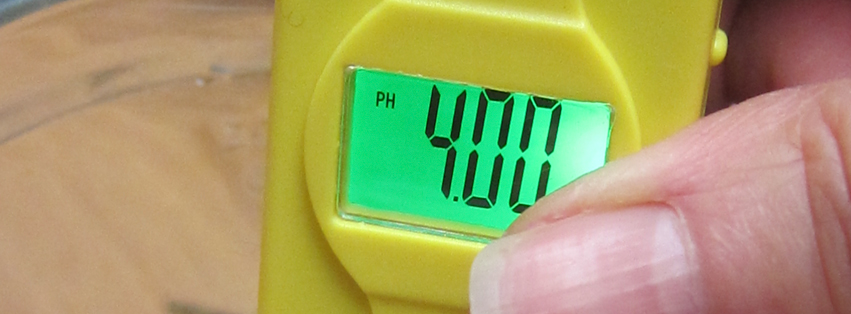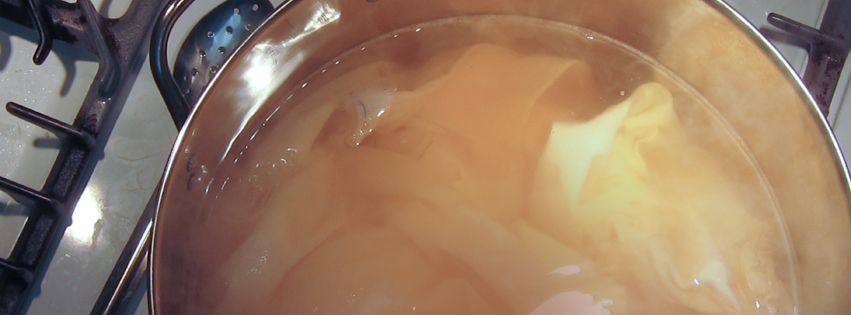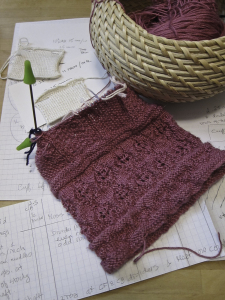Dye tests – calibrating the PH meter
PH is important to dye results – particularly with reds – and I never did get the hang of reading PH test strips that I’d just dipped in a dyebath,
As far as I can see, the strips turn the colour of the dye, which isn’t much help in figuring out the PH. Also, they come in packages of 100 or more, and are good for about a year from the time the package is open. I don’t do dye runs often enough to use the test strips up by their best before date, so I’d have to toss most of them and order new each year, which is a pain.
So I bit the bullet & ordered a PH meter on Amazon.
It needed to be calibrated; though the directions were in instructionese, they were reasonably idiot proof. The meter came with two little packets of powder and a tiny screwdriver. The powders, plus distilled water, provided the required acid & alkaline test solutions and the tiny screwdriver fit an equally tiny screw that let me adjust readings up or down.
So, now I’ve got scoured fabrics & yarns, and a working PH meter – preparing the sample swatches is next!



